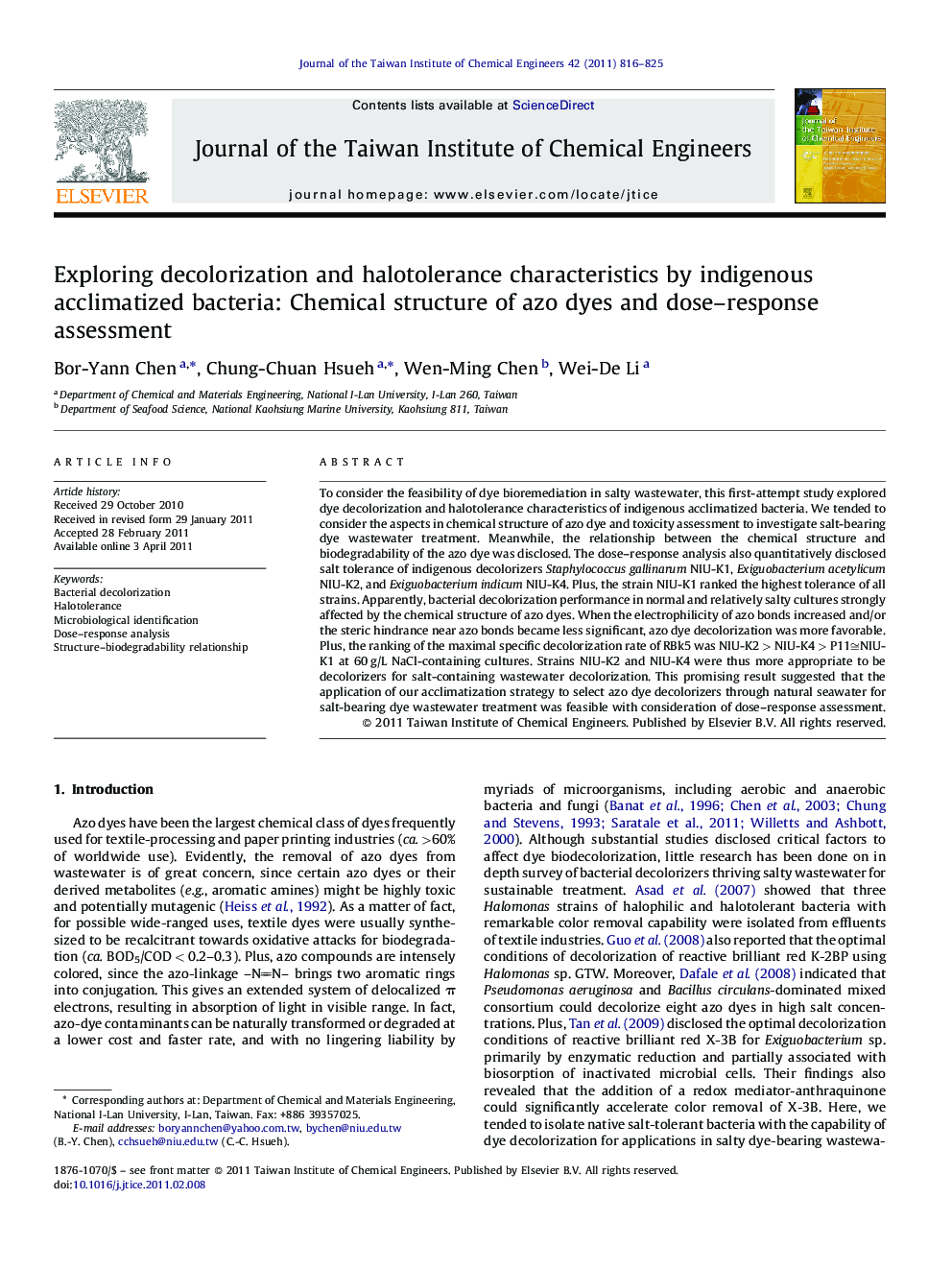| Article ID | Journal | Published Year | Pages | File Type |
|---|---|---|---|---|
| 691616 | Journal of the Taiwan Institute of Chemical Engineers | 2011 | 10 Pages |
To consider the feasibility of dye bioremediation in salty wastewater, this first-attempt study explored dye decolorization and halotolerance characteristics of indigenous acclimatized bacteria. We tended to consider the aspects in chemical structure of azo dye and toxicity assessment to investigate salt-bearing dye wastewater treatment. Meanwhile, the relationship between the chemical structure and biodegradability of the azo dye was disclosed. The dose–response analysis also quantitatively disclosed salt tolerance of indigenous decolorizers Staphylococcus gallinarum NIU-K1, Exiguobacterium acetylicum NIU-K2, and Exiguobacterium indicum NIU-K4. Plus, the strain NIU-K1 ranked the highest tolerance of all strains. Apparently, bacterial decolorization performance in normal and relatively salty cultures strongly affected by the chemical structure of azo dyes. When the electrophilicity of azo bonds increased and/or the steric hindrance near azo bonds became less significant, azo dye decolorization was more favorable. Plus, the ranking of the maximal specific decolorization rate of RBk5 was NIU-K2 > NIU-K4 > P11≅NIU-K1 at 60 g/L NaCl-containing cultures. Strains NIU-K2 and NIU-K4 were thus more appropriate to be decolorizers for salt-containing wastewater decolorization. This promising result suggested that the application of our acclimatization strategy to select azo dye decolorizers through natural seawater for salt-bearing dye wastewater treatment was feasible with consideration of dose–response assessment.
